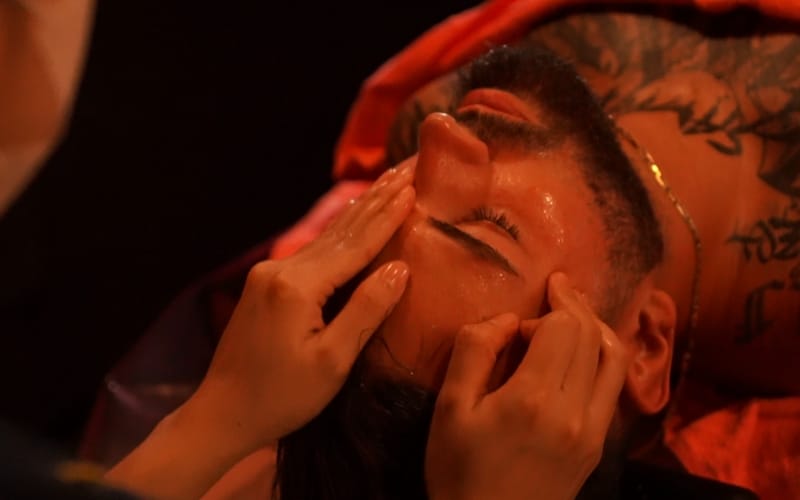Massage is one of the oldest healthcare methods, dating back thousands of years across cultures like Egypt, India, and China. Despite the passage of time, the value of massage remains unchanged – it helps the body relax, restore energy, and balance the mind. This article, compiled by Panda Spa, provides a massage guide for beginners that is comprehensive, easy to understand, and safe, enabling you to practice effective relaxation at home.
1. Introduction to Massage for Beginners
Massage is not just about rubbing; it is a holistic body care art. When performed correctly, massage can stimulate blood circulation, reduce muscle pain, relax the mind, and improve sleep quality.
According to Statista (2023), over 80% of massage service users reported reduced stress and better sleep after just one session. Massage not only soothes the body but also brings mental comfort, especially for those who work long hours, sit for extended periods, or experience high stress.
1.1. Benefits of Learning Massage
Learning massage not only provides physical benefits but also improves mental well-being and interpersonal relationships. Key benefits of starting a massage guide for beginners include:
-
Reducing stress and anxiety: Gentle rubbing movements help the body release endorphins – hormones that promote relaxation.
-
Improving sleep quality: Regular massage stabilizes the nervous system, facilitating deeper sleep.
-
Relieving muscle soreness: Ideal for office workers, athletes, or those who sit for long periods.
-
Enhancing blood circulation: Helps deliver oxygen and nutrients to cells faster, resulting in radiant skin and a more flexible body.
-
Boosting natural immunity: Regular massage reduces cortisol – the stress hormone – thereby enhancing resistance.
A study on PubMed indicates that 60% of people with chronic back pain experienced improvement after four weeks of massage therapy.
1.2. Who Should Learn Massage?
Massage is suitable for almost everyone. Groups that should start learning include:
-
People with frequent muscle pain or tension due to prolonged sitting.
-
Office workers, drivers, or those with high-pressure jobs.
-
Couples seeking to bond and understand each other through physical care.
-
Individuals looking to pursue a career in spa or professional therapy.
-
Those wanting to relax at home without frequent spa visits.
Even without experience, you can start thanks to detailed guidance from Panda Spa.
2. Preparation Before Massage
Before starting, preparing the environment and tools is crucial for enhancing relaxation effectiveness.
2.1. Ideal Massage Environment
The massage environment should evoke calmness, cleanliness, and relaxation. Panda Spa suggests the following preparations:
-
Soft lighting: Use warm yellow light or candles to soothe the eyes.
-
Calming music: Piano, meditation, or stream sounds to relax the mind.
-
Fragrance: Use lavender, sweet orange, or mint essential oils for a pleasant atmosphere.
-
Room temperature: Around 26–28°C is ideal.
A harmonious environment helps the recipient relax, allowing the body to absorb positive energy more effectively.
2.2. Essential Tools for Beginners
To perform a massage guide for beginners, prepare the following basic items:
-
Massage oil: Prioritize natural oils like coconut, almond, or jojoba to nourish skin and reduce friction.
-
Soft, clean towels: Used to wipe oil or cover the body.
-
Small pillow or bolster: Supports the neck, back, or knees.
-
Hot stones or heat packs: Help muscles relax more deeply.
2.3. Safety Precautions for Massage
Massage is a gentle therapy, but beginners should follow these rules:
-
Avoid massage when tired, feverish, or with open wounds.
-
Avoid strong pressure on the neck, spine, or knees.
-
Do not massage after a heavy meal or alcohol consumption.
-
Always ask the recipient about their comfort to adjust pressure appropriately.
3. Basic Massage Process for Beginners
Once fully prepared, you can start with the following five basic massage steps.
3.1. Five Basic Massage Steps
-
Warm-up:
Gently rub the targeted area for 2–3 minutes to warm the muscles. -
Effleurage:
Long, steady strokes along the muscles to promote relaxation. -
Petrissage:
Gently knead muscle groups to relieve deep tension. -
Stretching:
Perform slowly, especially on the shoulders, neck, and back. -
Finishing:
Light strokes to soothe the skin and stabilize blood circulation.
3.2. Basic Massage Techniques
Key techniques to practice regularly:
-
Effleurage: Long, light, continuous strokes for full-body relaxation.
-
Petrissage: Kneading large muscle groups, often used on the back and thighs.
-
Friction: Small circular rubbing to enhance blood flow.
-
Tapotement: Light tapping to gently stimulate muscles, often used to conclude the session.
Note: Practice on the shoulders and back first to get accustomed to the feel and control pressure better before moving to full-body massage.
3.3. Common Mistakes to Avoid
When learning a massage guide for beginners, avoid these common errors:
-
Using excessive force: Can cause pain or soft tissue damage.
-
Lack of communication: Not asking for feedback can make the recipient uncomfortable.
-
Skipping warm-up: Unwarmed muscles are prone to stiffness.
-
Unhygienic hands or tools: Can cause skin irritation.
A proper process always prioritizes the recipient’s comfort.
Learn more: Massage for Fatigue Relief – A Solution for Body and Mind
4. How to Maintain Massage Effectiveness After Practice
After completing a massage guide for beginners, many overlook post-massage body care. In fact, this is critical for extending the benefits, deepening relaxation, and preventing recurring soreness.
Massage accounts for only 50% of overall effectiveness; the rest depends on how you care for your body post-massage. Below are detailed guidelines from Panda Spa experts to maintain optimal results.
4.1. Post-Massage Body Care
After a massage, the body is relaxed, and blood circulation is heightened, making proper care essential.
1. Stay hydrated:
Post-massage, the body detoxifies through sweat and the lymphatic system. Drinking warm water rehydrates and aids toxin elimination. Avoid cold water to prevent sudden muscle contraction.
2. Rest for 20–30 minutes:
Avoid intense activity or immediate bathing. Let the body fully absorb the therapy’s benefits.
3. Shower with warm water, avoid strong soaps:
After 1–2 hours, lightly shower to remove residual oil. Avoid overly hot or cold water.
4. Eat light, avoid spicy foods:
Post-massage, digestion is more active. Opt for light meals like porridge, soup, or fruit for better nutrient absorption.
5. Maintain regular massage:
For long-term benefits, massage 1–2 times weekly. For frequent exercisers, increase to 3 sessions per week.
4.2. Signs of Effective Massage
Not everyone notices massage benefits immediately. However, the following signs indicate your body is responding positively:
-
Deeper, better sleep: The most noticeable sign after 1–2 sessions.
-
Reduced muscle tension: Feeling lighter in the shoulders, neck, and back upon waking.
-
Improved mood: The body produces endorphins, promoting joy and relaxation.
-
Brighter, smoother skin: Better blood circulation leads to radiant, healthy skin.
-
Reduced pain during movement: Especially for those who sit a lot or exercise regularly.
If benefits aren’t immediately clear, maintain regular massages for 3–4 weeks. The effects will accumulate, helping the body restore natural energy.
Learn more: What to Know About Massage for a Perfect Experience
Frequently Asked Questions About Massage for Beginners
Can beginners learn massage on their own?
Yes. You can learn through instructional videos or courses at Panda Spa to master basic techniques and practice safely.
Which massage oil is suitable for beginners?
Use natural oils like coconut, almond, or jojoba. They ensure smooth hand movements, hydrate, and are skin-safe.
How long should a massage session last?
Each session should last 15–30 minutes, depending on the body area. Avoid over-massaging to prevent muscle pain or skin irritation.
Should you pursue professional massage training?
If you love spa work and want a career, join professional training at Panda Spa to learn proper techniques.
When should you avoid massage?
Avoid massage when feverish, tired, intoxicated, or with skin conditions. Ensure your body is healthy before proceeding.
Conclusion
The massage guide for beginners is a simple yet highly effective method for health and mental well-being. With proper preparation and consistent practice, you’ll feel noticeable relaxation daily. To experience or learn advanced massage, contact Panda Spa – a trusted destination for comprehensive body care.
Learn more: Pandan-Style Massage – Panda Spa Foot & Body Massage
———————————————————————
Hotline: 038.3967.775 / 070.818.5397 Email: booking@pandaspa.vn Messenger: Panda Spa Da Nang Kakao Talk: Panda Spa Da Nang Naver: Panda Spa Da Nang Tripadvisor: Panda Spa & Massage In Danang City Address 1: 229 Nguyen Van Thoai, Son Tra – Da Nang Address 2: 225 Nguyen Van Thoai, Son Tra – Da NangCONTACT NOW

